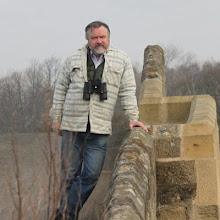To the modern eye birding by shooting is somewhat inconsistent with the aims of the naturalist however the Victorians in their rush for knowledge had no such scruples and John Hancock (1808-1890) certainly went off fully cocked to shoot anything he found. I've often said that many of the species in the Hancock (now Great North) Museum were taken at Prestwick Carr but never really had the information to justify the claim. Rummaging the internet over Christmas I unearthed this link for a document by Richard House in 1899 recording the collection
The PC death list is as follows (starts well down the list as he or his suppliers didn't get any Hawks, Owls here)
73. Reed Bunting 1833.
78. Skylark. 1836
105. Mistle Thrush (Woolsington) 1899
110. Song Thrush (Woolsington) 1899
9. Golden Plover 1843
26. Curlew (at Woolsington) 1893 (not Hancock then!)
30. Black tailed Godwit 1831 & 1846
46. Little Stint 1837
47. Temmincks Stint 1832 & (at Berwick Hill) 1848
53. Ruff 1836 & 1841
61. Spotted Redshank 1850
62. Redshank 1846
64. Wood Sandpiper 1853
66. Common Sandpiper (at Woolsington by accident!) 1895
69. Greenshank 1881
75. Moorhen (3 at Woolsington)
78. Coot 1835
89. Little Bittern (Blagdon) 1810
21. Pomarine Skua 1889
63. Bewicks Swan 1829
67. White fronted Goose 1845
68. Greylag Goose 1845 & 1855
87. Teal 1840
93. Pochard 1836
The species list indicate the nature of the area at the time as variable wetland with predominance of wading birds. The record for Wood Sandpiper is of interest as it was an adult from a nest of four eggs which were taken and recorded as the first breeding for this species in England. Perhaps also a reason why they didn't establish as a breeding species.





Thanks for this. I was told about the Wood Sandpiper nesting about thirty odd years ago but have never had this record confirmed before today. Prestwick Carr continues to amaze.
ReplyDelete